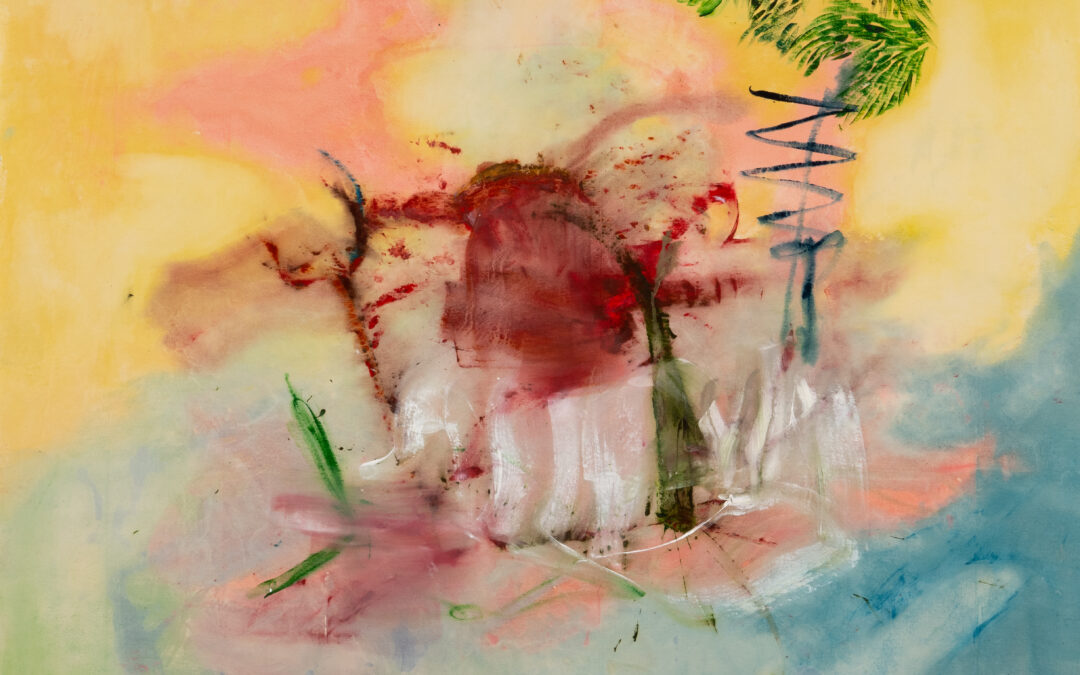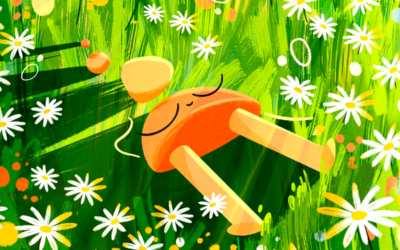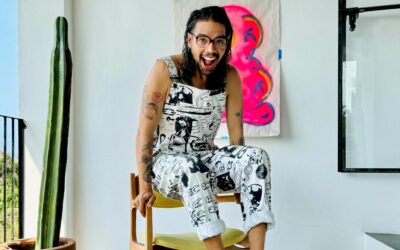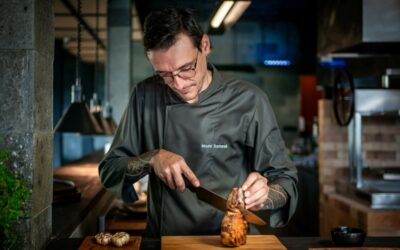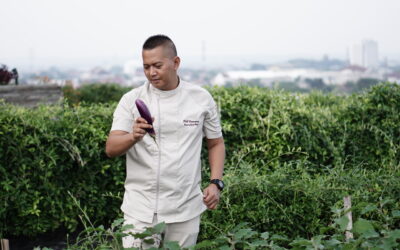“In the initial phase of my artistic journey, I devoted my efforts to sculpture, predominantly utilizing glass as my chosen medium. However, as my artistic pursuits evolved, I transitioned from portraiture to figurative painting, ultimately embracing abstract expressionism as my predominant style,” says artist Hannes Schauer. His profound admiration and respect for nature plays a significant role in shaping his creative vision, as he is fascinated by the complex structures and patterns present in the natural world. Another important influencing factor in his process lies in his professional background of working as a psychological advisor with neurological diverse children and adolescents in various schools and therapeutic facilities in Austria. This inspired the artist to explore themes of otherness and its ramifications.
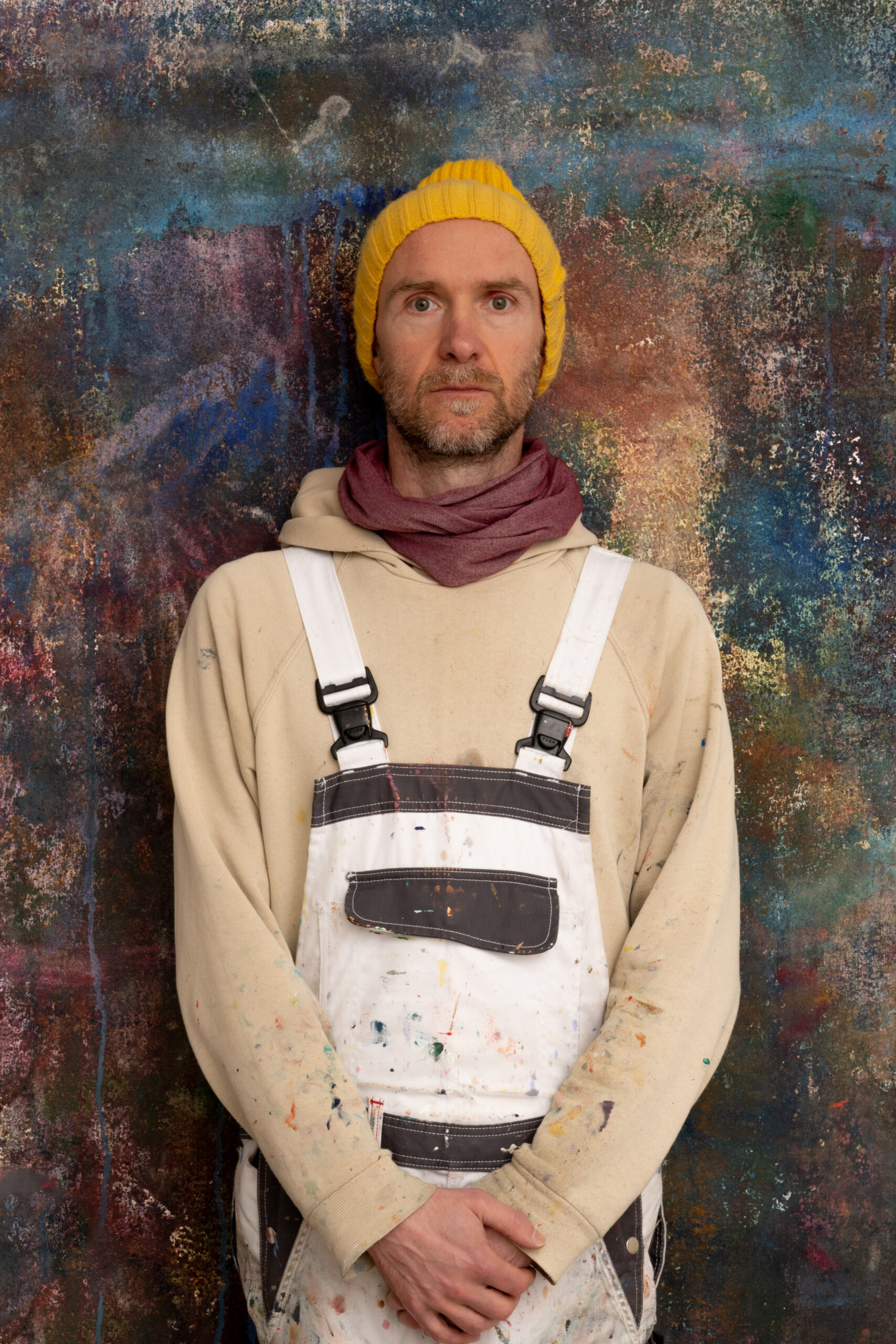
Hannes Schauer
In his approach to painting he diverges from traditional methodologies that rely on preconceived ideas, sketches, and a systematic progression toward the final piece. Instead, he finds himself captivated by the unexpected elements that arise during the creative process – accidents, spontaneous bursts of energy, wild layering, mistakes, and experimentation. These factors often yield works imbued with mystery, surprise, and a sense of otherness. He considers my practice essential for fostering dialogue, prompting a reevaluation of one’s perspective, and cultivating a sense of re-mapping. In an era marked by polarization, his approach to art serves as a reminder of the potential for unity and understanding through creative expression. Hannes Schauer has an art degree from the College for Arts, Crafts & Design in Kramsach, Austria.
What’s integral to the work of an artist?
Never second-guess what other people want and expect from you as an artist.
What role does the artist have in society?
Our Job is to make trouble and also to settle troubled waters. Our job is to bring people’s focus to the present moment, make you think along a different path, re-evaluate your life and your choices, view otherness and different concepts and outlooks on life with curiosity and generosity. Our job is to bring people closer together in these polarizing times.
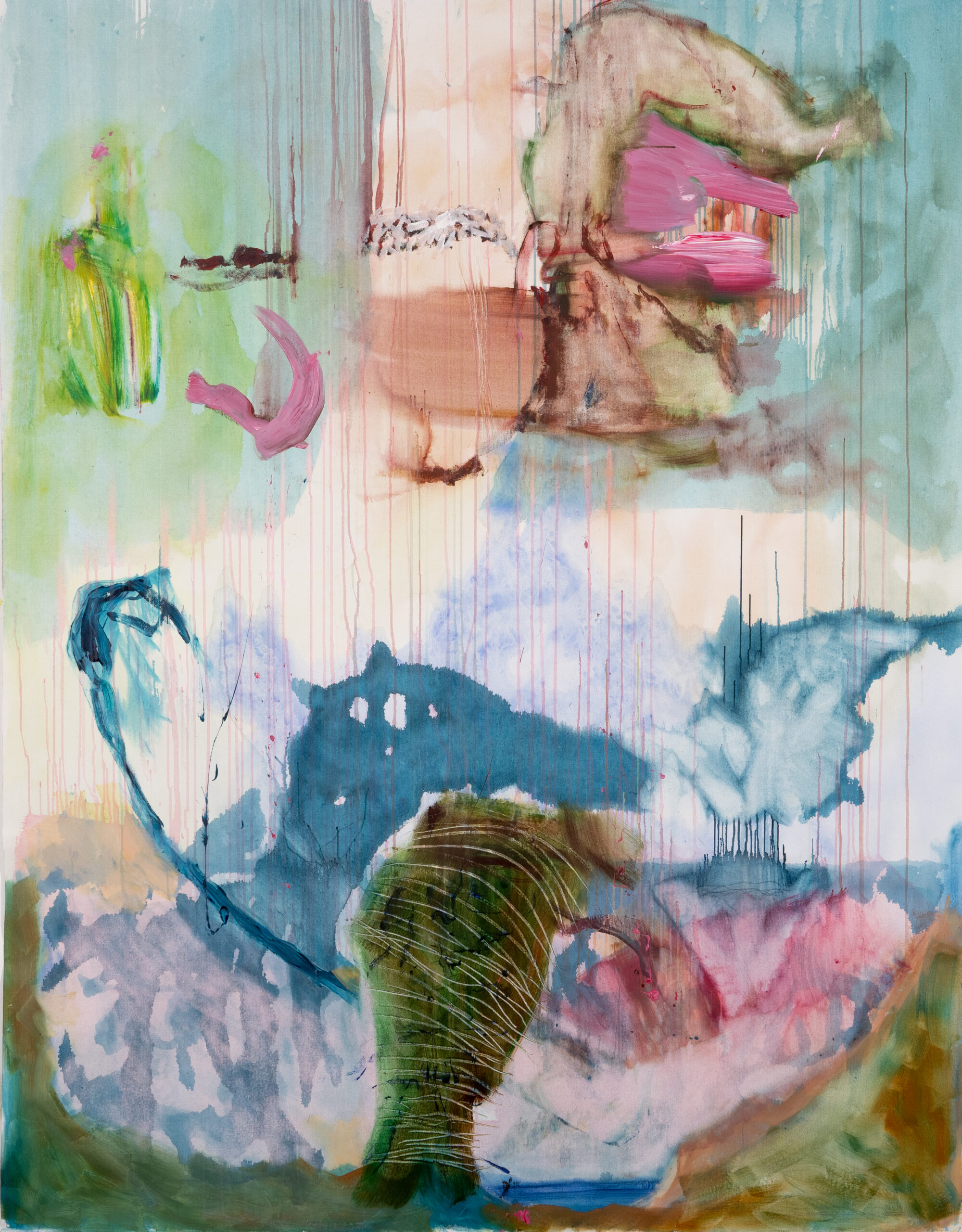
What role does the artist have in society?
Paintings by Helen Frankenthaler, Cy Twombly, Francis Bacon, Vincent Van Gogh, Edvard Munch, Egon Schiele, Gustav Klimt, Max Beckmann, Frank Bowling, Mark Rothko, Jean Michel Basquiat, Martha Jungwirth, Rachel Jones, Gerhard and Daniel Richter and I am sure many more who I can not think of right now, resonate very strongly with me.
What themes do you pursue?
Answered in Question 1 (nature and otherness) my landscapes represent not so much real landscapes but they are the landscapes I feel with my emotions. Otherness and outsider positions also inform my work. This was more obvious in my earlier figurative and portraiture pieces, but I guess it still finds its way into my current abstract body of work.
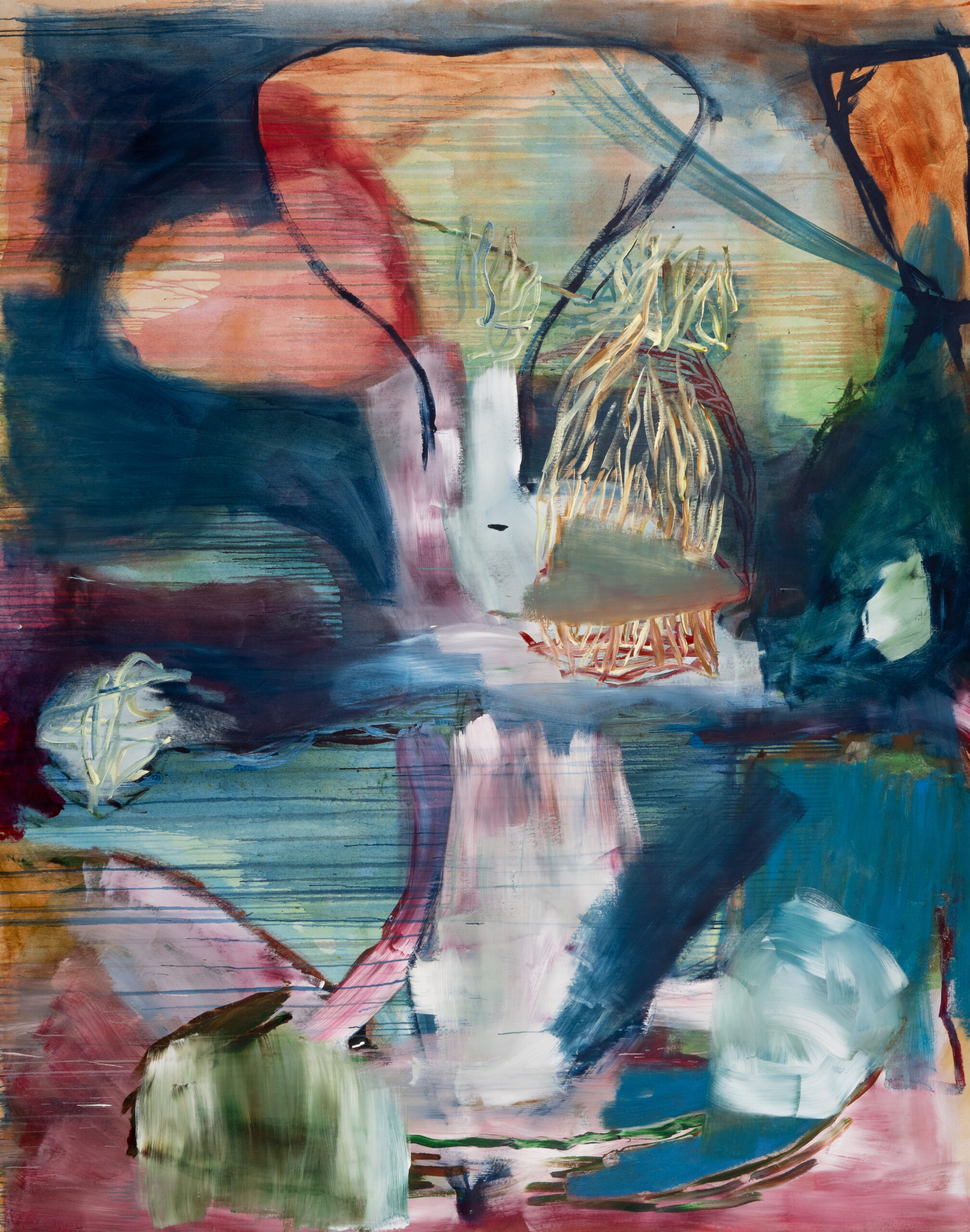
What’s your favourite art work?
From my own paintings, it is a work called “Garden of Tomorrow” which I created in late February of this year. This is a particularly meaningful piece in my oeuvre because it signifies a transformative moment in my artistic journey, characterised by an expansion in scale and a shift towards abstraction. Previously dominant elements, such as faces and figures, gradually fade into the background, suggesting that they may have fulfilled their intended purpose.
I do not have one single favourite piece of art, but the whole oeuvre of Jean Michel Basquiat has had the biggest impact on me growing up and my visual education.
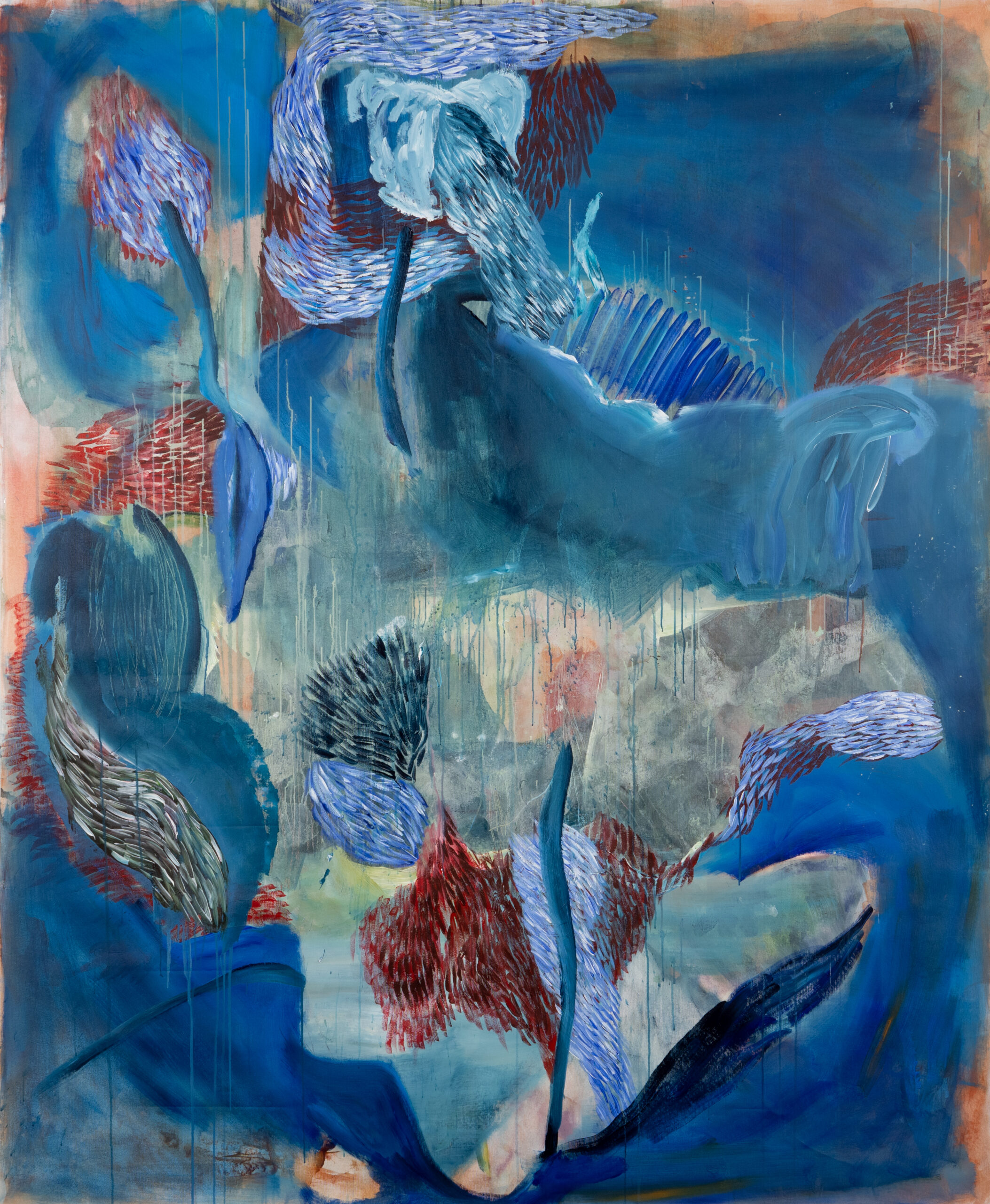
Describe a real-life situation that inspired you?
I love to spent time in nature, mostly on my own, without the interference of other people and their energy. In these moments, which I consider holy, I do feel the strongest connection with life itself. I am not a religious person in the classical sense, but in nature I do find what is often referred to as god.
Standing in front of a great piece of art in a museum or a gallery is another real-life situation I find inspiring. But also a pattern on the wall, a reflection of light, a particular sound, a certain smell, or simply watching a child can serve as inspiration.
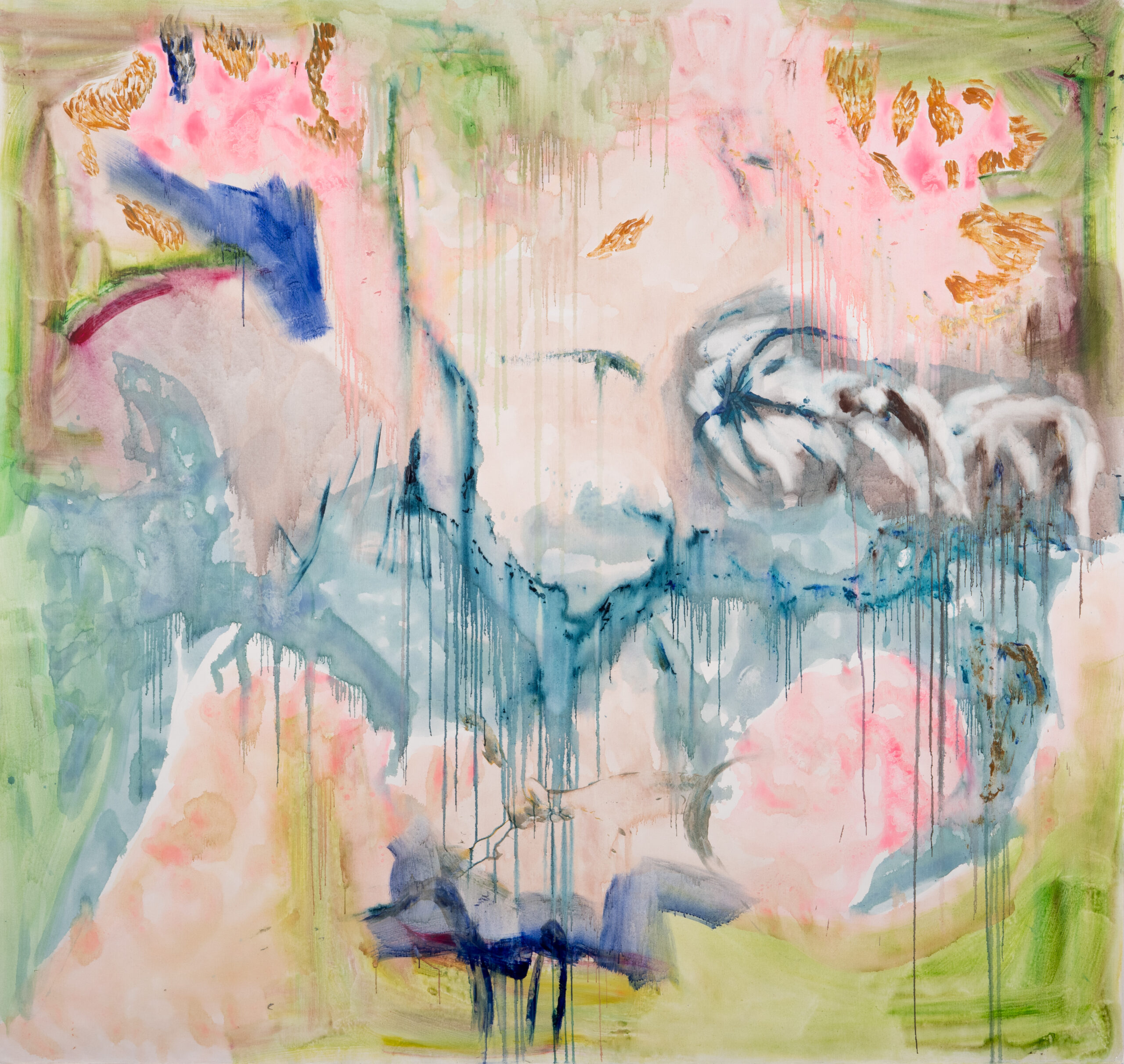
What jobs have you done other than being an artist?
I have worked as a Yoga instructor and psychological advisor (mainly with neurological-diverse children and adolescents) I also ran a restaurant and bar in Austria and have worked as a barkeeper prior to having my own business. There were many more jobs over the years, but these are the main occupations.
Why art?
It does not feel like I really had a say in the matter.
What is an artistic outlook on life?
Nothing has to stay the same. Not even you as a person.
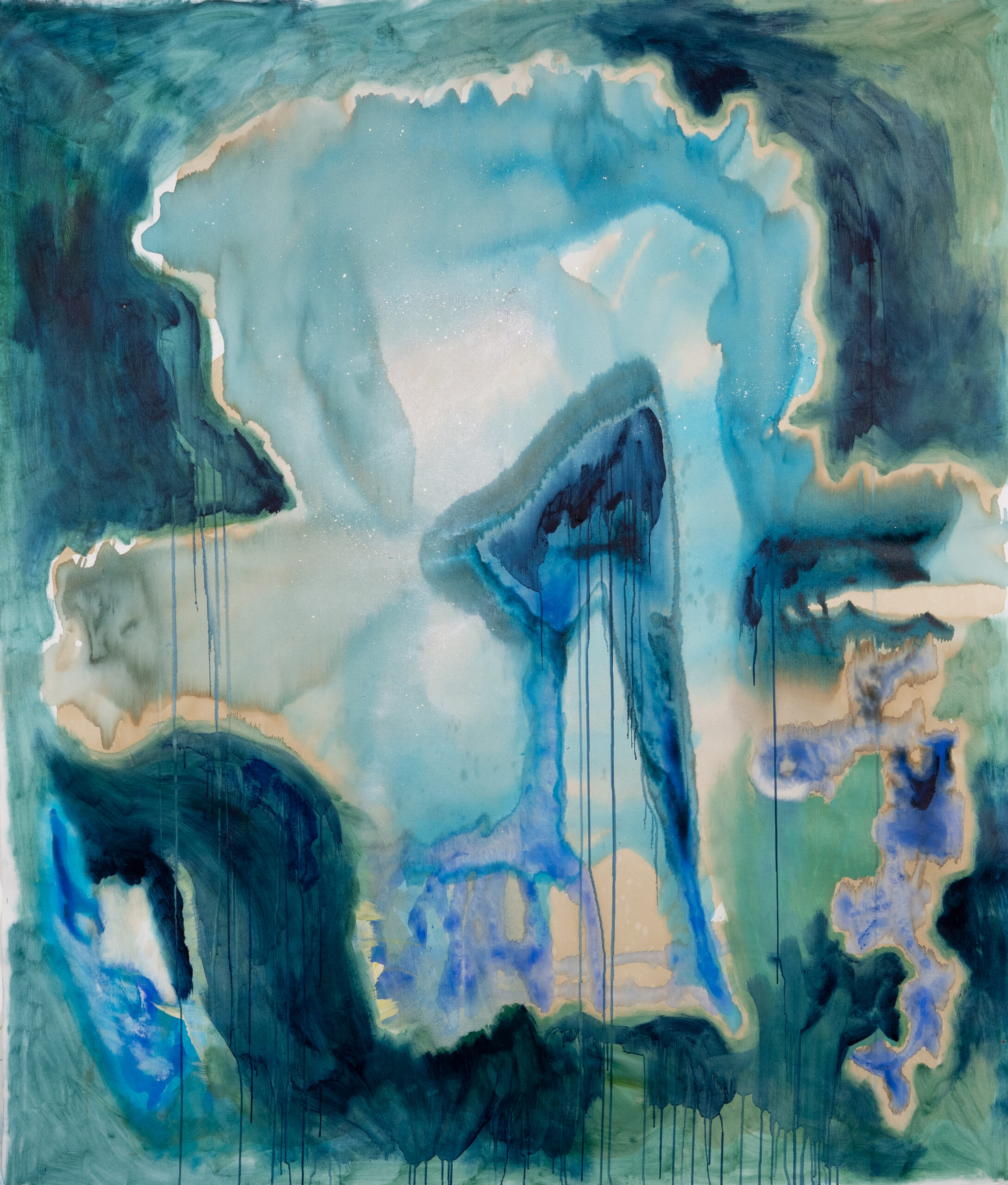
What memorable responses have you had to your work?
I am lucky enough to say that I have had many positive responses to my work, particularly in the last 4 months. There is not a single one that stands out and comes to mind now.
What food, drink, song inspires you?
I am a composer of electronic music and have worked in this field for over 20 years. There is so much music I could refer to. Some of my main influences include David Bowie, Prince, The Cure, Jimi Hendrix, Nick Cave, Tom Waits, Aphex Twin, Autechre and Boards of Canada.
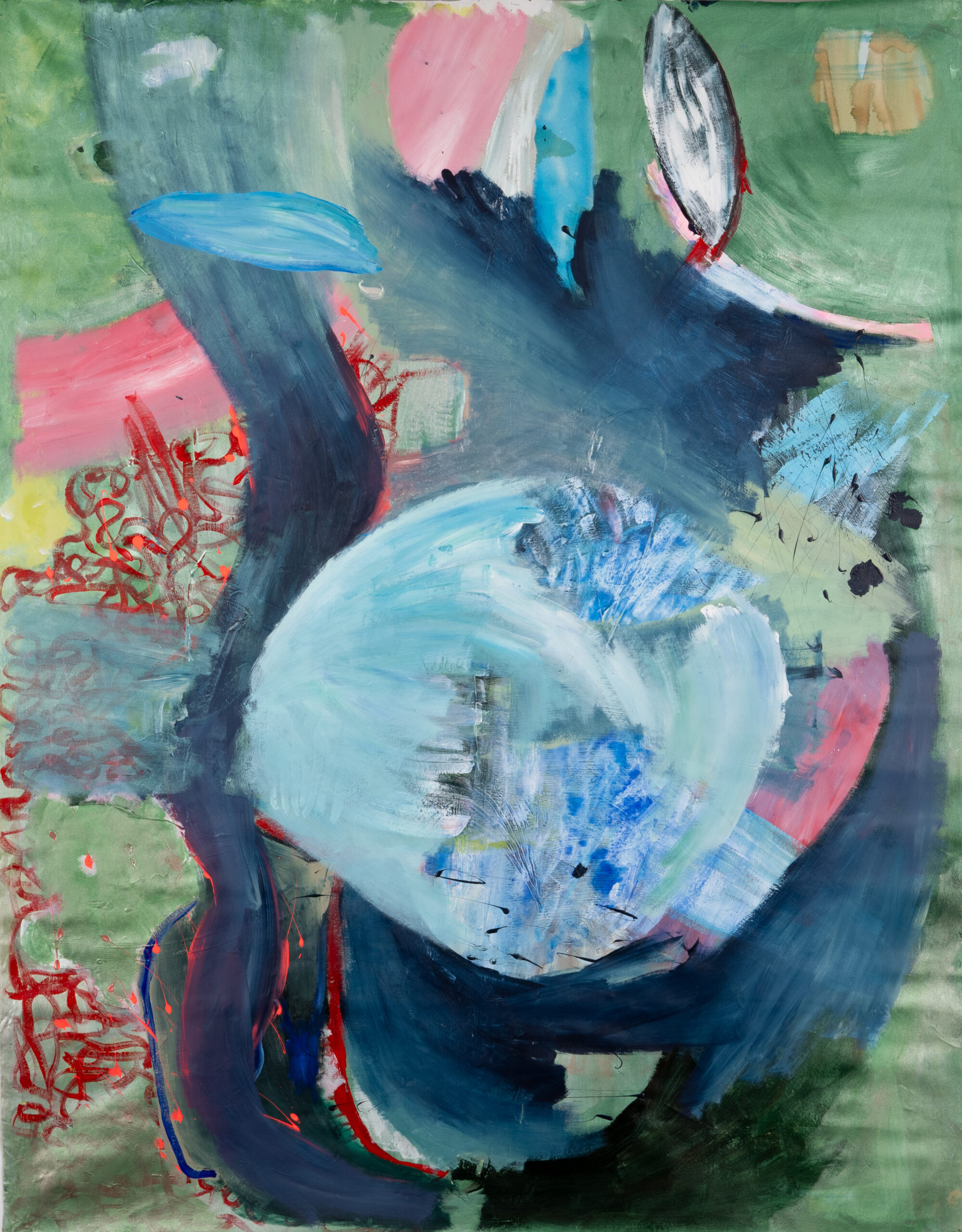
Is the artistic life lonely? What do you do to counteract it?
The life as a painter is a lonely one. I spend most of my time in my studio on my own. After the daily practise I am usually too tired and exhausted to have a social life, so I return home, cook and also spend most of my evenings on my own. I like to be alone, but it gets too much. To counteract this I listen to a lot of podcasts and radio. Human voices in the background help create the illusion of being amongst people.
What do you dislike about the art world?
There is a lot of pretending and a two-class society in art, which I dislike. The viewing of art as an investment only is another part of the art world that I can do without.
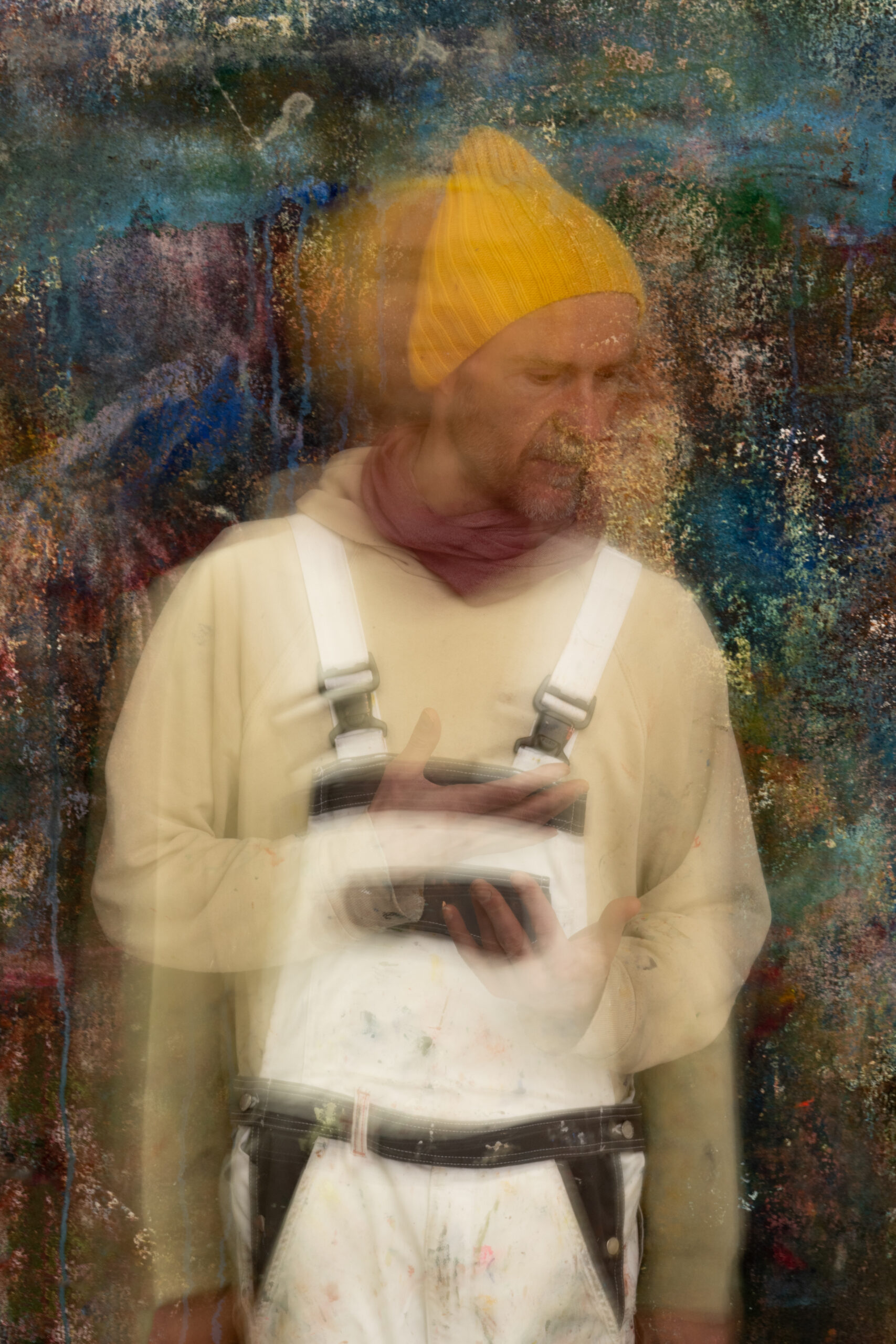
What do you dislike about your work?
That’s a hard one to answer. Every “true” artist has to deal with this. It’s not easy to give it a name, to know exactly what it is. In my case, it feels like a constant companion in the form of doubt and judgement. This companion can serve as a mentor, but can also get in the way and destroy you and your work. There is a balance between the mentoring and the destructive aspect that is beneficial to your growth as an artist I believe.
What do you like about your work?
I like it when I manage to forget about myself as a person with all the baggage that comes along with it. I like it when there are moments of just letting it happen, watch it develop without interfering too much. A little guidance is needed, of course, but you can easily get in the way of the work coming along.
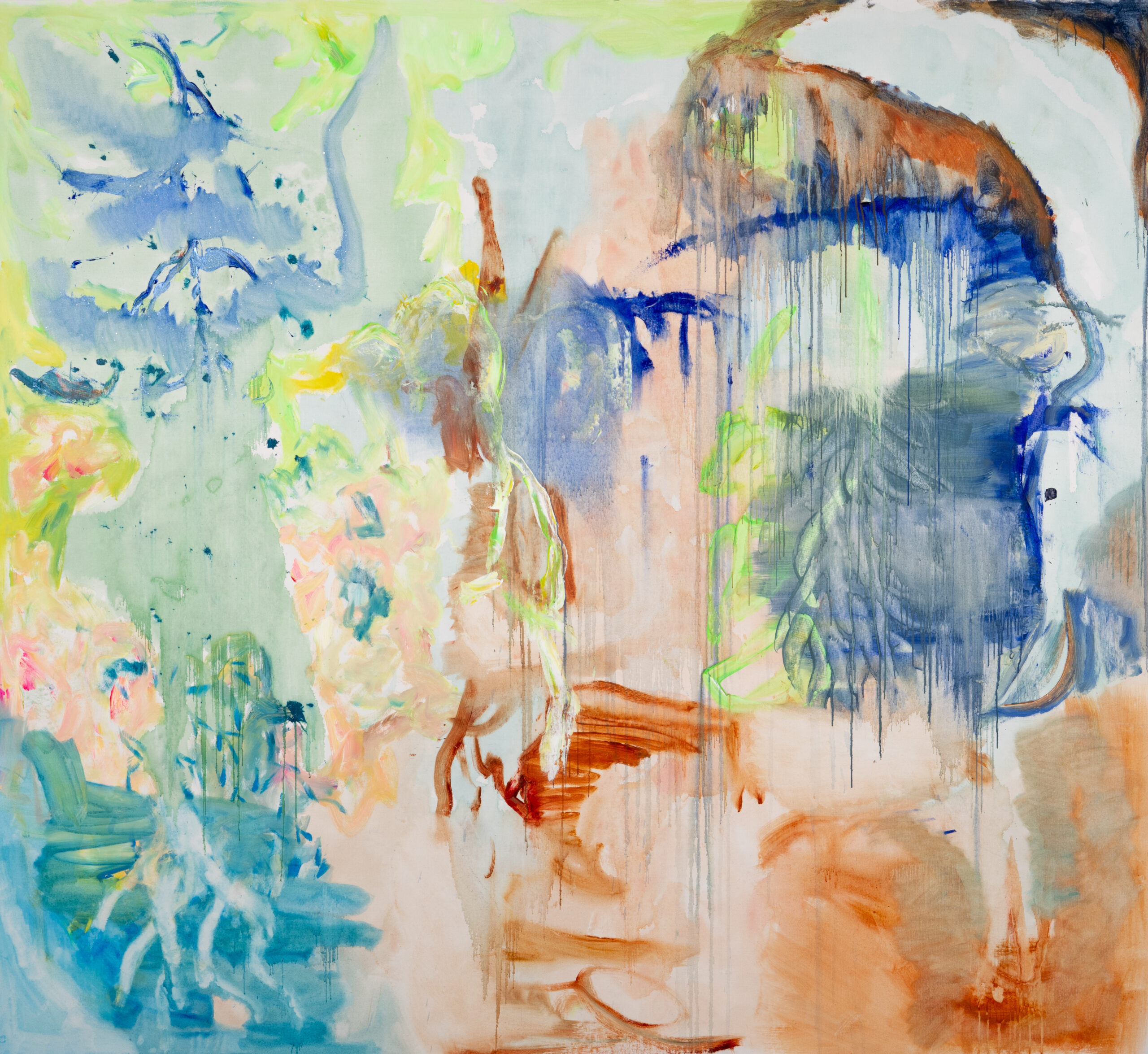
Should art be funded?
Yes.
What role does arts funding have?
Art funding should enable outsider positions to do their work. Also non-commercial art should be funded accordingly.
What is your dream project?
Working with several national and international artists on an inter-media project including visual art, music and performance.
Name three artists you’d like to be compared to.
Jean Michel Basquiat, Helen Frankenthaler and Daniel Richter. Helen Frankenthaler is a comparison I do get to hear quite frequently. Jean Michel Basquiat was a comparison I did get to hear in the past when I still worked figuratively. Egon Schiele would be another great comparison, but also for my work in the past.
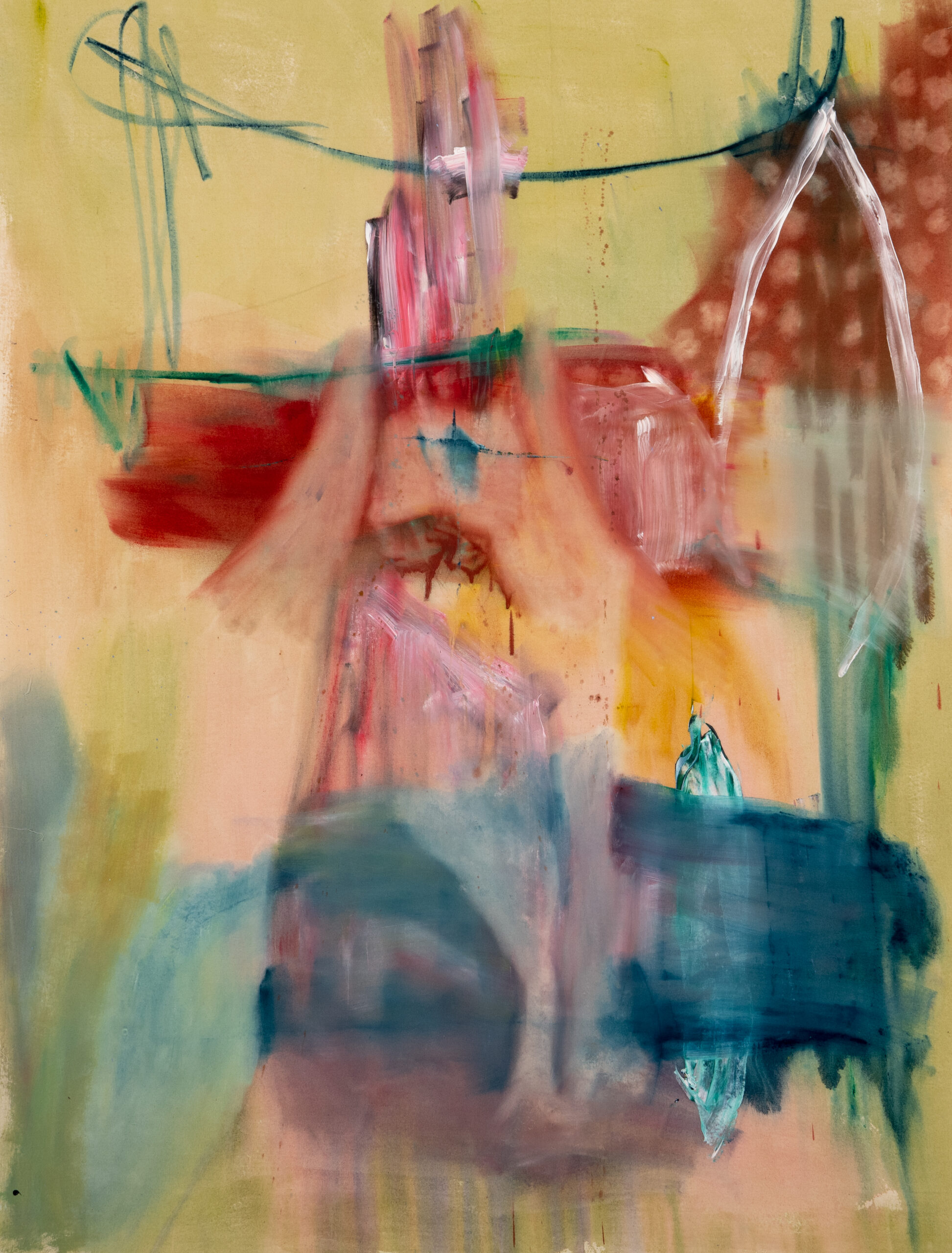
Favourite or most inspirational place ?
On a mountain or in the forest. Also by the sea.
What’s the best piece of advice you’ve been given?
Make your own mistakes. Don’t care about what others expect you to do or to create.
Professionally, what’s your goal?
Being able to make a living from my art and connecting with other artists.
future plans?
Paint and breathe.


